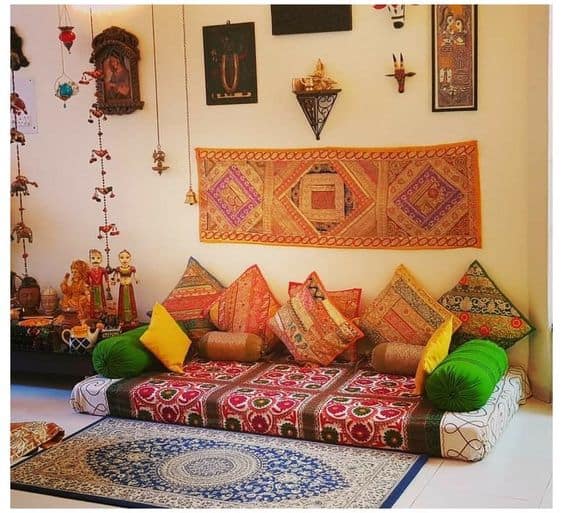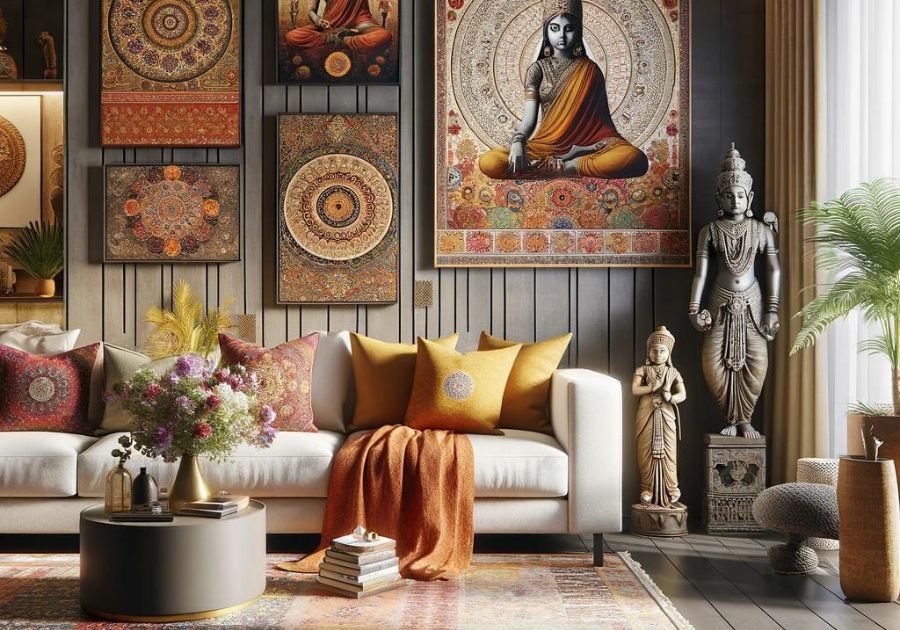Indian traditional home decor is a beautiful blend of vibrant colors, intricate designs, and rich cultural heritage. Having grown up in a household adorned with these exquisite elements, I have always felt a deep connection to my roots through decor. In this article, we will explore the various aspects of Indian traditional home decor, its significance, styles, and how you can incorporate these stunning elements into your own home.
The Importance of Indian Traditional Home Decor
Indian home decor is not just about aesthetics; it reflects centuries of culture, tradition, and craftsmanship. Each piece tells a story, representing the ethos of various communities across the country. Embracing traditional decor can turn your home into a sanctuary of comfort and heritage.
Understanding the Cultural Significance
Indian traditional decor is heavily influenced by religion, mythology, and the daily lives of its people. For instance, motifs and designs often represent good fortune, prosperity, and spirituality. Many families believe that decorating their homes according to these traditions invites positive energy.

Key Elements of Indian Traditional Home Decor
1. Color Palette
Indian decor is known for its vibrant colors. Rich reds, yellows, greens, and blues are predominant, often inspired by nature and festivals. Here’s a look at some popular color schemes:

| Color | Symbolism |
|---|---|
| Red | Love, passion, and fertility |
| Yellow | Knowledge, learning, and happiness |
| Green | Harmony, growth, and prosperity |
| Blue | Calmness, stability, and peace |
2. Fabrics and Textiles
India is renowned for its textiles, often made from cotton, silk, and wool. Traditional fabrics like Khadi, Banarasi, and Kanjivaram are commonly used for curtains, cushions, and upholstery, adding a touch of elegance to your decor.

3. Furniture Styles
Traditional Indian furniture is typically made of wood and features intricate carvings. Here are a few types:
- Chowki: A low table with wooden legs, often used for seating.
- Jharokha: Ornate window frames that serve as a decorative element.
- Diwan: A traditional daybed, perfect for lounging.

4. Decorative Items
Add charm to your home with traditional decorative items like:
- Brass utensils: Used as decorative pieces for their antique appeal.
- Rangoli: Colorful patterns made on the floor to welcome guests.
- Wall hangings: Tapestries, paintings, and murals depicting mythological stories.

Popular Styles of Indian Traditional Home Decor
1. Rajasthani Decor
This style is characterized by vibrant colors, mirror work, and intricate wooden carvings. You’ll often find hand-painted furniture and traditional art pieces.

Pros and Cons of Rajasthani Decor
| Pros | Cons |
|---|---|
| Vibrant and lively | Can be overwhelming if overused |
| Rich cultural heritage | Maintenance may be required for wood finishes |
2. South Indian Decor
This style often features traditional elements like Kanjivaram silks, intricate brass artifacts, and Thanjavur paintings. The focus is on simplicity and elegance.
Pros and Cons of South Indian Decor
| Pros | Cons |
|---|---|
| Timeless and elegant | May appear simple compared to other styles |
| Rich silk textiles | Silk may require special care |
3. Bengali Decor
Known for its minimalistic approach, Bengali decor includes earthy colors, natural materials, and artistic pottery. This style is all about comfort and warmth.
Pros and Cons of Bengali Decor
| Pros | Cons |
|---|---|
| Warm and inviting atmosphere | Lesser-known outside of India |
| Focus on natural materials | May not suit all tastes |
How to Incorporate Indian Traditional Decor into Modern Homes
Mixing traditional elements with modern design can create a unique aesthetic. Here are some tips:
1. Choose a Focal Point
Start by selecting a key piece—like a traditional Indian tapestry or a beautifully crafted wooden table—that can act as the focal point of the room.
2. Use Textiles Wisely
Add some traditional cushions or a throw in vibrant fabrics to your sofa. These small touches can transform the modern look into a warm, inviting space.
3. Blend with Contemporary Items
Pair traditional decor with modern furniture. A traditional brass lamp on a contemporary dais can create a stunning contrast.
4. Incorporate Art
Invest in Indian art pieces, such as paintings or sculptures, that reflect your personality or story. Art can serve as a conversation starter and add character to your home.
Maintaining Indian Traditional Decor
Caring for traditional pieces is essential. Here are some maintenance tips:
1. Regular Cleaning
Dust your decor regularly and use soft cloths to avoid scratches on delicate surfaces.
2. Proper Storage
Store textiles in a cool, dry place. Avoid damp areas to prevent mold, especially for silk fabrics.
3. Protect from Sunlight
Keep your wooden pieces away from direct sunlight to prevent fading and warping.
Conclusion: Embracing Indian Traditional Home Decor
Indian traditional home decor is not just a design choice—it’s a way to connect with heritage and culture. By thoughtfully incorporating these elements, you can create a space that is not only beautiful but also meaningful. Whether you choose vibrant Rajasthani art or serene South Indian textiles, the key is to let your personality shine through your decor.
FAQs about Indian Traditional Home Decor
What are the key features of Indian traditional home decor?
Indian traditional home decor features vibrant colors, intricate textiles, handmade furniture, and decorative items that reflect culture and heritage.
How can I mix traditional Indian decor with modern styles?
Balance traditional elements with contemporary furniture, use textiles creatively, and choose a focal point to create harmony between the two styles.
What materials are commonly used in Indian traditional home decor?
Common materials include wood, brass, clay, and rich fabrics like silk and cotton.
Is Indian traditional decor suitable for small spaces?
Yes, you can incorporate traditional elements like wall art and smaller decor items without overwhelming a space.
How do I maintain my traditional Indian decor?
Regular cleaning, proper storage of textiles, and protecting wooden pieces from sunlight are essential for maintenance.